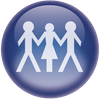Chapter 14: Peoples, Teams and Interactions
Previous chapter: 13 Timeboxing
14 people, teams and interactions
14.1 Introduction
Collaboration and good communication are major factors in ensuring successful projects. DSDM places such importance on these that two of the eight principles highlight these topics.
Poor communication is recognised as the major cause of project failure. There are many examples of poor communication on projects; these are just some of the more common ones:
- Not defining and using shared language
- No access to the right people at the right time, particularly lack of verbal contact
- Ignoring information which is difficult to deal with or which contradicts your own view
- Key stakeholders not being identified or kept fully informed
- Appropriate communication channels not considered
- Only communicating using the written word
Poor communication on a project often results in delivery of the wrong solution.
DSDM directly addresses a number of such issues which improve communication and collaboration.
14.2 Effective Communication
14.2.1 Communication skills and the use of terminology
Effective communication skills are essential for all those involved in a DSDM project. They underpin many of the DSDM principles and are vital for effective team-working and for ensuring the transparency that all Agile approaches rely on. It is also important to remember that face-to-face communication is as much about listening (verbal messages) and watching (body language messages) as it is about speaking. In some circumstances a lot of information can be gained without saying a word; and like many of the soft skills, communication skills are not easy to teach or to learn. They can be worked on and improved, but they rely on a basic willingness and desire to improve communication in the first place. If this desire is absent, then communication is not two-way, but ends up more as a question-and-answer session, driven by one side or, worse still a documented statement ‘sent out’ for feedback and approval. This is not the DSDM way, as DSDM fully supports the Agile manifesto statements:
“We value: Individuals and interactions above processes and tools” and “Customer collaboration over contract negotiation”
The soft skills possessed by the team, and the importance of those skills, should not be underestimated. When recruiting team members, selection criteria should balance technical capability and soft skills where possible. A well-performing communicative team can achieve far more than a team with the same technical capabilities but without these soft skills.
Teams may benefit from some short sessions to explore the way they communicate or possibly from some behavioural coaching. In any case, the way in which the team communicates and the effectiveness of their communication, both internally and with those outside the team, should be a key part of the retrospectives held throughout the project, evaluating soft skills such as:
- Listening
- Cooperation, compromise, negotiation
- Open, honest, transparent interactions
- Non-verbal communication, e.g. body language, tone of voice etc.
- Self-awareness
- Appreciation of others, empathy
It is also important to recognise that building a DSDM team brings together people who often use a different vocabulary or specialist language, based on their area of expertise. Members of the team should always try to use plain shared language, where possible. Where this is not possible, then it is good practice to maintain a glossary to define each term and its agreed definition. This simple step can avoid much confusion.
14.2.2 Planning effective communication
Effective communication does not happen automatically, especially now there are many channels of communication to choose from. One of the key risks is that star ting to rely too heavily on technology for communication stops people from communicating effectively. Most people have experienced situations where heavy use of email starts replacing person-to-person conversation, resulting in the loss of much of the real meaning:
- Emailing the person at the next desk! This may give the perception of not disturbing them but misunderstandings and lack of clarification often cause problems later on
- Some organisations address this with guidelines for email etiquette
- Being inundated with high volumes of emails, many of which are copied to a large number of people (just in case). This can result in important issues being missed
Communicating effectively actually requires some careful thought on how to take full advantage of the communication options available. It is important to identify which style of communication will give the best results in the particular circumstances and to select the most appropriate style for the situation. It is worth lightly considering such aspects as the different communities, the type and frequency of communication, the best medium and which roles are best suited to communicate with them. For example, a solution may be delivering a significant change to a user community and such a message is usually best delivered face to face (if possible) by the Business Visionary, or possibly the Business Ambassador.
Well-known techniques such as stakeholder analysis and stakeholder management are also very useful to support decisions about communication. For example, identifying key stakeholders (in terms of power/influence and interest) who warrant face-to-face communication, often on a one-to-one basis. There will also be a number of people with little power or influence, who simply need to be “kept in the loop”. For these people, simple email communication may genuinely be the most effective choice. The important thing is that such decisions are informed choices, and that effective communication is a two-way process.
Even a very light and informal assessment of the most appropriate method, frequency and process for different communications helps to focus communication. It is also important to be clear which decisions need to be recorded, to ensure everyone is clear which decisions have been made, and also to ensure key decisions are communicated.
14.2.3 Communication choices
1) Face-to-Face: Face-to-face communication will usually be the most effective way of communicating, either with individuals or with a small-to-medium sized group (as a workshop or a meeting). As well as enabling the rationale behind decisions to be fully understood, face-to-face communication allows immediate clarification of misunderstandings.
- Allows communication using all the senses, but particularly words, tone of voice and body language.
2) Conferencing - Video Conference (VC) and its variations: If those involved cannot physically get together, then a video conference is often the next most effective channel. For preference, each local group should gather in the same room, sharing one link in to the group conversation.
- VC - Allows communication using words, tone of voice and body language (although body language communication may be limited by the field of vision of the video link e.g. may be facial expression only as well as the performance of the link which, where poor, may lead to ‘blocky’ images or a lag between sound and vision)
- Teleconference – Allows communication using words and tone of voice, but excludes body language
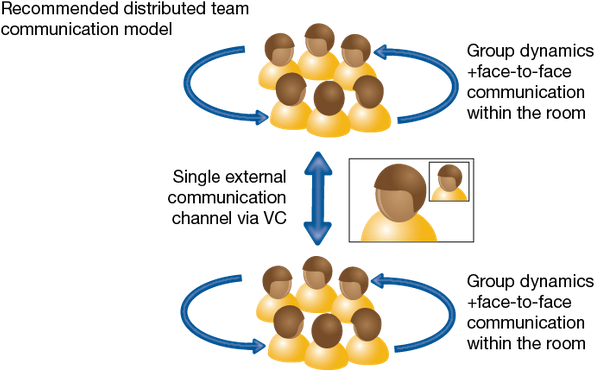
Figure 14a: Distributed team communication at its most effective
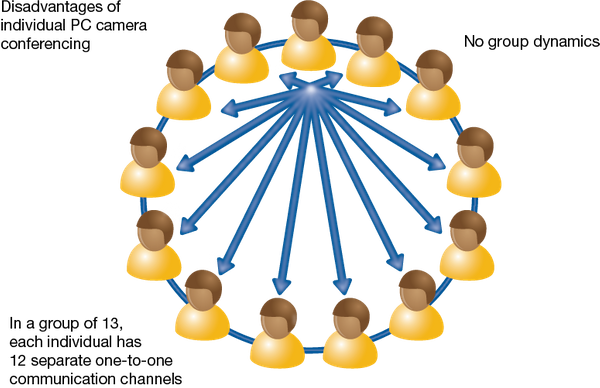
Figure 14b: Distributed team communication at its least effective
For preference, distributed teams should run their Daily Stand-ups around their Team Board with some kind of video link to the remote team members. Some DSDM teams will even have a live link running between onshore and offshore team members in order to simulate joint workplace. However, if these options are not possible then individuals can use headsets and video cameras on their PCs, although this is less effective than communicating as local groups.
However, where there is a large group in one location and several smaller groups or individuals all in separate locations, it may be more effective (and fairer) for everyone to dial in or VC so that everybody is working with similar constraints as regards to making themselves heard. Alternatively, consider a more facilitated session where somebody in the central location is responsible for ensuring the remote participants can participate effectively.
Whichever version of conference is chosen (video or telephone), everyone should aim to make each session as dynamic, vibrant and fun as possible, as if all team members were together. This can be done with a little thought, and it will greatly increase the real atmosphere of the DSDM style of working.
3) Chat facilities: For quick interchange of short pieces of information, this can be very effective. The sender can usually see whether the recipient is actually online and so they can expect a fast response. Most chat facilities have an automatic record feature, allowing the conversation to be saved.
- Allows communication using words
- Excludes tone of voice and body language
4) Email: Often treated (wrongly!) as the default communication channel. Email can be very effective for confirming what has been previously agreed (where the earlier discussion has used a communication channel higher up on this list). Email is also an effective channel for broadcasting information to a large group where getting people together is not justifiable, provided email best practice is followed.
- Allows communication using words
- Excludes tone of voice and body language
To be most effective, emails should remove as much of the unnecessary “padding” as is possible whilst still ensuring the message is clear and stands out. Care should be given to elements such as the email title (so that the recipient can quickly assess how relevant the content is to them) and the list of To: and Copy: recipients.
5) Collaborative workspaces: These can be very effective for communicating informally within a team.
- Allows communication using words, models, pictures
Some workspace examples are project websites, intranets/extranets, Googledocs, Dropbox, Huddle; there are many others.
6) Documents: These are still important in DSDM, for capturing and managing more formal information and artefacts which need to be shared and managed, for example a risk log. However, where information is volatile or needs clarification, a document would normally be the last choice for effective collaborative communication.
A useful guideline for creating documents is “If you don’t know who is going to read the document, then don’t write it. And if you do know, ask them what they need it to contain”.
Where possible, documents may communicate more effectively when pictures, models and diagrams are included, in preference to relying solely on large blocks of solid text.
- Allows communication using words, models, pictures.
14.2.4 Words or pictures?
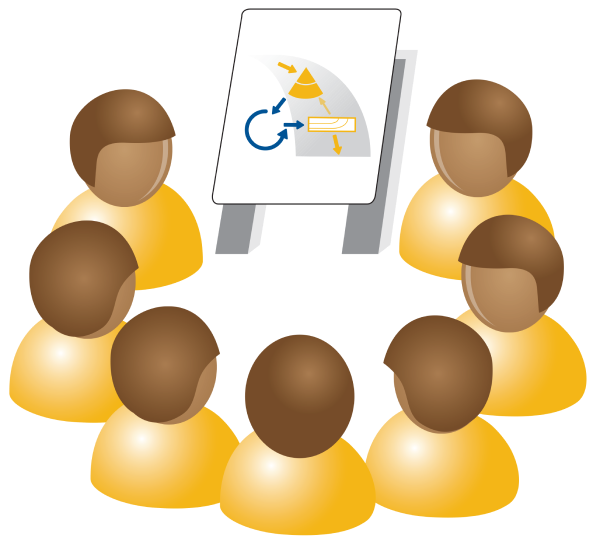
Figure 14c: “A picture is worth a thousand words”
Sometimes the most effective communication can be by drawing by a simple picture, rather than giving a verbal or written description. DSDM actively encourages the use of visualisation through the use of practices such as
Modelling and Iterative Development: both practices enhance the effectiveness of the spoken or written word.
14.2.5 Ongoing day-to-day communication
Similarly to all other Agile approaches, DSDM chooses from all available options to share information in the most effective way.
14.2.5.1 Team Boards
These are also sometimes referred to as Information Radiators (IRs), Kanban Boards or Big Visible Charts (BVCs).
They are simple, easily understood, often graphical representations of key information about the project. Although they are normally used for the current Timebox, they can also be useful at project or even at programme level.
Team Boards form an intrinsic part of information sharing. For a co-located team, these are usually held on a physical wall or white board. However for a distributed team, they will have to be electronic (or both physical and electronic, if this is practical).
An effective Team Board provides a summary of team progress and the current status of their work. Ideally it should never be more than one working day out of date. It forms the focus for the Daily Stand-up.
Team Boards enable both the team members themselves and also any interested stakeholders to be able to see for themselves progress and other information with minimal effort. This removes the need to interrupt team members simply to find out “What’s going on”.
At its simplest, for a Timebox for example, the Team Board should show
- The objective for this Timebox
- The requirements or Stories that the team have committed to deliver, and which of these stories are not started, which are in progress, and which are “done”. This information is usually shown by the position of the story (and potentially its associated tasks) on the Team Board. Displaying information in this way is based on the concepts of Kanban
- Any work that is currently blocked (the use of bright warning-type colours is an effective way of emphasising the importance and risk of these blocked items)
- A countdown of the time left to the end of this Timebox (to emphasise the principle of deliver on time and to keep the team focused)
- Any significant risks or issues for this Timebox and the risk owners
This simple level of information may be expanded to provide addition information. However, it is important that the Team Board does not become so cluttered that it loses clarity.
Team Boards can also be used very effectively in the wider organisation, whether for tracking the progress of specific activities, or for showing the current state and progress of programmes of work.
14.2.5.2 Daily Stand-ups
The Daily Stand-up is the opportunity for the team quickly to catch up on where everyone is; to make any fine adjustments to the plan for the next 24 hours, and to flag up very early if any significant problems are starting to appear and to re-affirm that, as a team, they are still on track to deliver what they agreed to deliver at the end of the current Timebox. This session may either be facilitated by the Team Leader, or preferably run by the team members themselves as a self-organising Solution Development Team.
Full details of the Daily Stand-up can be found in Chapter 13 – Timeboxing.
As part of (or following on from) the Daily Stand-up, the empowered team may decide to swap tasks around, to take advantage of a task that has finished early or to reduce the risk of a task that is taking significantly longer than expected. This demonstrates not only effective communication, but collaboration in action.
14.2.6 Co-located teams
The ideal situation for effective communication (and collaboration) is where the team is co-located. It is always easiest to share information when other team members are sitting nearby. Wherever possible, as a minimum, the Solution Development Team should have their desks grouped together, and ideally include one or two spare desks for business roles as and when they spend time with the team. It is also useful to be near to, or to have access to an informal area for Stand-ups or wider team conversations to avoid disturbing others who may be engrossed in their own work at that time. However, such ideal conditions are not always possible or practical, since teams may be working split across different floors, sites, towns, countries, continents or time zones.
14.2.7 Distributed teams
In some circumstances, co-location is simply not possible or practical. Where people are based in different locations on one or more sites, then careful consideration needs to be given to methods of effective communication and how communication will work. Effective communication requires effort and planning, it does not just happen automatically with no effort.
There is already a lot of valuable guidance published on distributed team working, especially in relation to offshoring. However, in reality the problems are similar whether the site is split across continents or just at opposite ends of a city or even on different floors of the same building. It is just that cross-continent working adds more complexity around time zones and language and cultural differences!
Despite the technology available to support distance communication, if possible, a team should plan in some early face-to-face sessions to help establish a good working relationship. This in turn ensures that video-conference or teleconference sessions are more effective.
14.3 Collaboration
14.3.1 What is collaboration?
Collaboration is defined as “The action of working with someone to produce something”.
Collaboration is first and foremost about people. A good starting point for collaboration is the working relationships. Where there are healthy working relationships, this is where the best collaboration takes place. True collaboration, especially in a team context, is about ensuring give and take on all sides and being comfortable with this.
There are also a number of important cultural factors to consider for effective collaboration, (for example, values, beliefs and assumptions) and around personal style (personalities and behavioural preferences).
In particular, individual characteristics have a direct influence on the ability to collaborate. Those who are approachable, personable, good at forming relationships, open and good natured are typically, naturally collaborative.
For others, improving collaborative behaviours may require some conscious effort or coaching. Some people prefer working in a collaborative way, for others, a collaborative style of working would not be their first choice. In order to foster a collaborative DSDM culture, it is important to recognise and accept that this style of working comes more easily to some than others and to provide support and encouragement for people and teams as they start adopt a different (DSDM) style of working.
Collaboration is about understanding and working with differences of opinion and differing views. There is demonstrable value in fostering a collaborative team culture, both in terms of building better solutions, but also in terms of motivation and job satisfaction for individuals.
14.3.2 Building effective collaboration
Certain ingredients are needed to build effective collaborative teams. Some examples of these ingredients are:
- Having mutual trust between team members
- Having mutual respect between team members
- Being open-minded as an individual
- Being approachable as an individual
- Being available when needed
- Being open to change
- Having a clear direction
- Having a consistent and stable team membership
- Having belief in yourself as an individual and belief in others
- Communicating properly and effectively (e.g. using active listening, empathy etc.)
- Being subject to effective (DSDM-style) leadership
It is very rare to have the perfect team and the perfect environment already in place. So in reality, some of these ingredients may already be in place, others may need work to improve or establish them.
In order to capitalise on the value that collaborative working brings, it is sometimes necessary to address issues within the organisation or within individuals that act as barriers to collaboration.
Some examples of these collaboration barriers are:
- Organisational structures which group similar types of skill in silos, encouraging and supporting a “them and us” culture
- Managers who have to resource their projects based around scarce resources
- Organisational focus and reward based only on personal, individual goals
- Unwillingness to concede something for “the greater good” which would impact a personal goal
- A culture of personal competition
Collaboration can sometimes find itself in direct conflict to competition . In some organisations and cultures, recognition and reward, e.g. appraisals and salaries, are based on competition and being better than others, rather than around team achievement. As a result, this encourages individual success (competition) rather than team success (collaboration). These barriers need to be addressed to foster an environment where collaboration can thrive.
14.3.3 Collaborative people
Collaboration is all about problem-solving, bringing together people with expertise in very different areas in order to find a solution to the problem. Effective collaboration works best where individuals possess T-shaped skills: on the one hand, possessing a deep knowledge of their own discipline (the vertical part of the T), on the other hand, understanding how their discipline interacts with others (the horizontal part of the T).
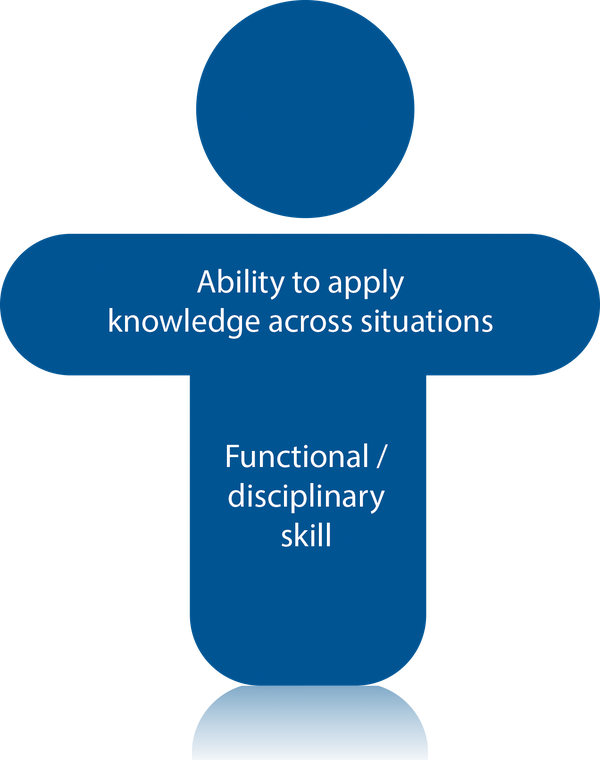
Figure 14d: T shaped skills
Having this breadth of experience is useful in dealing with both opportunities and problems. People with this broader skillset can apply different perspectives to their thinking to help the team form a cohesive approach. An understanding of how an individual’s discipline interacts with others is vital to help individual team members build a collaborative team.
14.3.4 DSDM teams
All Agile approaches place a high emphasis on the concept of “team”. DSDM teams bring together people from the business and solution community to work jointly towards a single shared goal. This is a very different scenario from many traditional style projects, where the divisions, the “us and them” culture, is reinforced from day one.
However, unlike most other Agile approaches, DSDM takes a wider view of the concept of “team”, recognising the importance of engaging the wider stakeholders. So as well as the Solution Development Team roles, DSDM identifies the roles that are focused on the overall project, and the roles that are supporting the Solution
Development Team. DSDM also strongly recommends ensuring that the standard best practice on stakeholder identification and stakeholder management should form part of the lifecycle, particularly Feasibility and Foundations activities. By ensuring everyone has the full picture of those involved in the project, those impacted by the project and those who will have an impact on the project, DSDM minimises the risks of nasty surprises later in the project.
This chapter focuses predominantly on collaboration for the project (based on the roles as defined in Chapter 7). However the guidance can also be applied to any external stakeholders for the project.
14.3.5 Shared team goals and ways of working
The cornerstone of team collaboration is having a single shared goal and ensuring this goal is visible to the whole team. Without a single goal, which the whole team buys into, collaboration is at risk as competing goals or personal agendas emerge.
It is also very beneficial to agree the team “norms” - the behaviours that form the basis of the team’s interactions and how they expect to work together.
As part of the lifecycle, the early phases of a DSDM project and the early DSDM products are important in bringing people together and making sure that common goals are established and visible to all. Products such as the Business Case, which define and publish the business vision (“a clear and concise statement of where the business or product expect to be after the project has completed”) are key to ensuring everyone on the team has the same understanding of the reason for the work and the value it will deliver to the business. This simple step alone removes much potential confusion. For many teams unused to a DSDM style of working, seeing this information stated in clear language, emphasises DSDM’s strong focus on effective communication as well as being a motivator to do a good job.
14.3.6 A culture to support collaboration
Collaboration is usually most effective where there is a supportive culture in place. This provides members of the team with the confidence and trust to be open and honest, and thus paving the way to ensure issues are raised early. When issues are raised early, solutions can be found while there are still options available. The later an issue is raised, the less choice is open to the team.
A blame culture is the antithesis of a supportive culture. Where a blame culture exists, it prevents the necessary honesty, and often results in behaviours such as:
- Spending time and effort shifting responsibility or preparing a defence in case problems arise in the future, rather than simply sorting the problem out now
- Hiding a problem, in the hope that it will somehow be resolved before anyone finds out
- Over-estimating the time needed for tasks, to avoid the perception of “failure”
A supportive culture means that there is recognition that mistakes do happen but that lessons are learnt and the team ensures that they are not repeated.
The DSDM practices of Workshops (Chapter 9) and Iterative Development (Chapter 11) also help to build and support a collaborative culture.
14.3.7 Leadership in a collaborative culture
A collaborative culture requires a particular style of leadership – facilitative and collaborative (as opposed to the authoritarian “command and control” style so often encountered on traditional-style projects). This facilitative and collaborative leadership style is promoted by all Agile approaches, and is sometimes referred to as “servant leader”. However as a “servant leader”, there is still an expectation that the leader will be an active participant, rather than a passive bystander, while always encouraging the team to be self-organising.
In particular, the DSDM roles of Project Manager and Team Leader should actively encourage, promote and support a no-blame culture and where necessary protect the team from external pressure, although all roles share the responsibility for making this happen. See Chapter 7 – Roles and Responsibilities for more detail of the style expected from Project Manager and Team Leader.
14.4 Summary
In summary, the importance of effective communication and collaboration cannot be underestimated. It is directly linked to the whole ethos of DSDM working. DSDM came about directly because technology allowed the creators of a solution to sit alongside the requestors of the solution and to talk to one another, providing short communication loops to evolve the solution. Initially this was often on a one-to-one basis and occurred where the creators self-selected and actively chose to work this way. But as DSDM has grown over the years, as the teams scale up, as teams involve people who have not selected themselves for this style of working, then everyone needs to remind themselves of the basics of effective communication and collaboration, since it is only when communication and collaboration are really working well, that a DSDM project can succeed.

